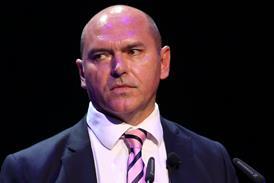Essential insight into NHS matters in the North West of England. Contact me in confidence here.
One unexpected proposal in the government’s white paper for a new NHS bill was to give ministers more power to intervene in local service reconfigurations.
The paper, published last month, claimed the secretary of state is currently only able to intervene in decisions “very late in the process” after receiving a formal referral from a local authority. It said new powers were needed to “intervene at any point”.
Yet, barely a few weeks later, health and social care secretary Matt Hancock has made a mockery of that by torpedoing a long-awaited consolidation of emergency services in central Lancashire.
The extraordinary intervention comes before a public consultation has even been launched, let alone any formal referral from councillors.
There has been years of debate and planning over the future of the accident and emergency department at Chorley Hospital, with the board of Lancashire Teaching Hospitals Foundation Trust under intense pressure from emergency clinicians who insist safely staffing the unit is too difficult.
Major work has been completed to build a robust clinical case, with four separate and independent groups of clinicians all agreeing consolidation with Preston’s A&E was necessary.
But a public consultation, in the offing since at least 2016, has been repeatedly held up by local politicians and campaigners — most notably Chorley MP Sir Lindsay Hoyle — as well as by the coronavirus pandemic.
Now Sir Lindsay, whose other role as House of Commons speaker offers a unique opportunity to influence government ministers, has landed a significant blow by seemingly persuading Mr Hancock to squash the plans.
In a letter to local NHS leaders, seen by North by North West, NHSE’s regional director Bill McCarthy said: “We have received instruction from both the secretary of state for health and the minister of state for health, to work with the integrated care system and local leadership to develop an option that provides safe, high quality care, that continues to include Chorley ED.
“This [is due to] deep concern at the way the process has been managed so far, as public confidence is not where it needs to be…[and] concern the work that has been done to assess the clinical issues has focused on the closure or downgrading of the ED at Chorley.”
Mr McCarthy said views from Lancashire’s integrated care system leadership (Amanda Doyle and David Flory) around patient safety issues “have been noted”, but he added: “There isn’t confidence that sufficient consideration has been given to how a safe, high quality service could be offered to local people while retaining the ED at Chorley.
“There will be no further discussion or prospect of closure of Chorley ED until a new set of options has been developed.”
But how can the secretary of state demand this without the formal powers his white paper says are so necessary?
Several senior sources in the region have told NxNW of a suggestion that ministers would get their way by effectively threatening to withhold capital funding for bigger projects — namely a potential £1bn already earmarked to dramatically upgrade the counties hospitals. The Department of Health and Social Care said it did not recognise the claim.
This grubby suggestion appears to have blindsided trust board members who are understood to be furious, while NHSE, which had already given its support to the reconfiguration, no doubt feels angry and undermined too.
The irony of expressing “deep concerns at the way the process has been managed” as part of an out-of-process intervention will also not be lost.
Was the white paper just plain wrong about ministers’ inability to interfere in local reconfiguration before a local authority referral, or was this simply an abuse of power?
Five to 10 years away
Rather than draw up fresh proposals for central Lancashire alone, the plans are now likely to be rolled into the major estates project between Lancashire Teaching Hospitals and University Hospitals of Morecambe Bay, which could render the whole Chorley debate irrelevant.
The trusts have together been given seed funding (and a potential capital allocation of £1.1bn) under the government’s “40 new hospitals” programme, to draw up plans for either one or two new hospitals to be built by 2030.
The one hospital option would likely be a new site off the M6, somewhere north of Preston, which would replace the acute services at Lancaster Royal Infirmary, Royal Preston Hospital, and Chorley Hospital.
The two-hospital option would be to rebuild LRI, and build a second hospital to replace the acute services at Preston and Chorley, perhaps between the two in Bamber Bridge. This sounds more expensive (an extra hospital and less surplus land to flog), but less politically contentious.
Clearly on one level it makes sense for the Preston/Chorley configuration to be considered as part of this wider project. But the problem with that for Lancashire Teaching Hospitals and its emergency clinicians is that any new hospitals are five to 10 years away.
That’s an awful long time to live with the clinical risk of keeping Chorley A&E open, and to wait for the accompanying measures to bolster community care that were also part of the planned reconfiguration.
Leadership change
Lancashire Teaching Hospitals’ chief executive Karen Partington has been stuck in the middle of all this, and it won’t be a part of the job she misses.
Last month, she announced she would be retiring at the end of 2021, after what will then have been 10 years in the job.
Assuming the board doesn’t now change its mind about that long notice period, it leaves plenty of time to appoint a successor, but also to consider the implications of changing the leadership model.
One obvious option is for Kevin McGee, who already runs East Lancashire Hospitals Trust and Blackpool Teaching Hospitals FT, to take over Lancashire Teaching Hospitals as well.
Mr McGee is ambitious and highly thought of by NHSE, and his appointment would fit with ongoing work to bolster collaboration between the county’s four acute providers (the group has recently been identified for accelerated development by NHSE).
But with East Lancs and especially Blackpool still needing lots of attention, taking on all the demands of Lancashire Teaching Hospitals at the same time would be a hell of an ask. Might a short-term solution involve someone else coming in to lead East Lancs?
Drawing the boundary
In other structure news, the Department of Housing, Communities and Local Government is considering a proposal to create a unitary authority for Morecambe Bay, which would be coterminous with the current NHS footprint.
Two of the four University Hospitals of Morecambe Bay sites are currently in Cumbria (Furness General and Westmorland General), while two are in Lancashire (Royal Lancaster Infirmary and Queen Victoria), which creates a headache when it comes to integration with social care services.
A new Morecambe Bay council would encompass all four hospitals and sit solely within the Lancashire and South Cumbria integrated care system.
But will ministers be prepared to move Lancashire’s historic county town, Lancaster, into another local authority?
Head scratching
The more fundamental issue facing the ICS is the underlying financial deficit, which system leaders recently estimated to have grown to around £300m.
They reckon there are potential savings of around £150m to be had in the next few years, but are essentially left scratching their heads over the rest.
































27 Readers' comments